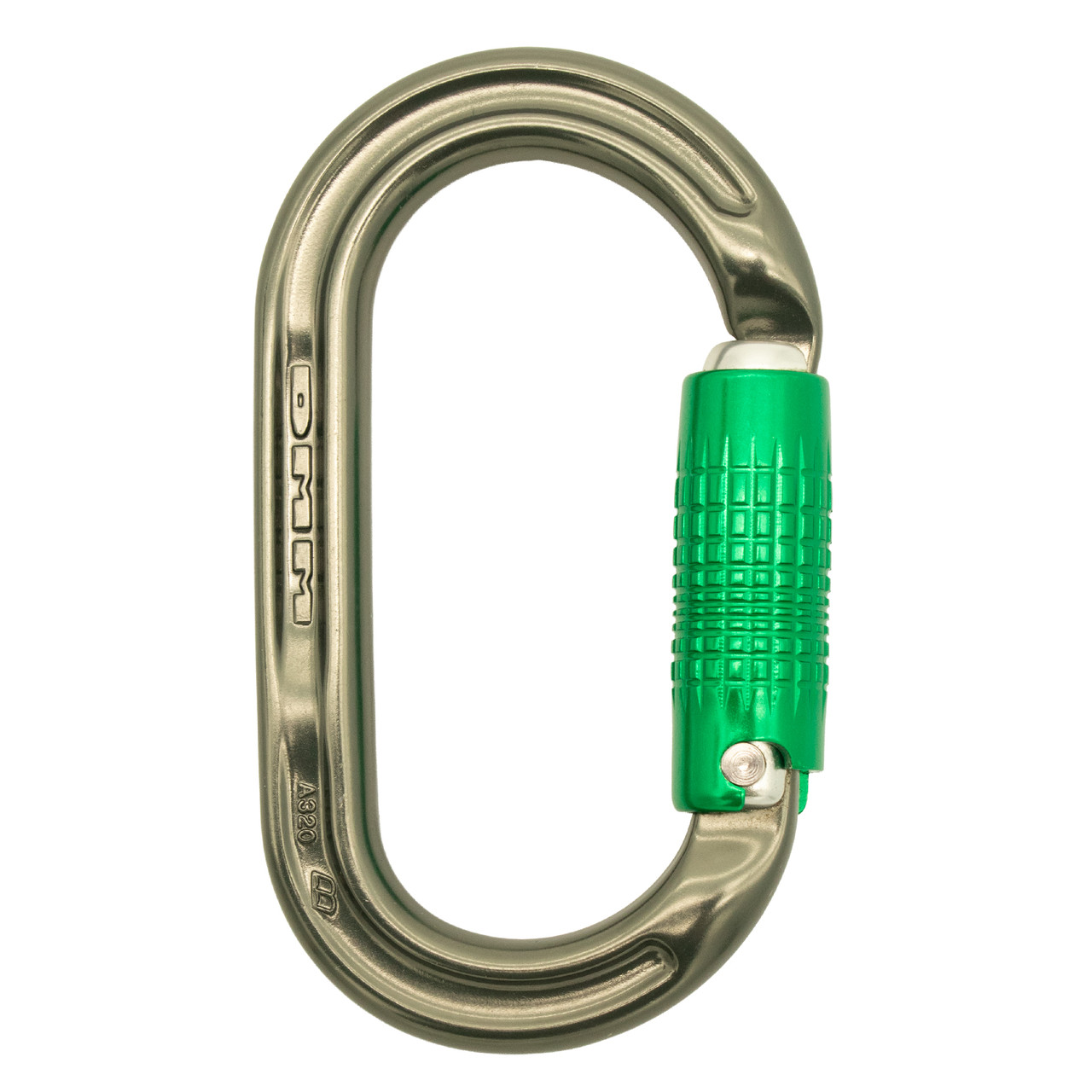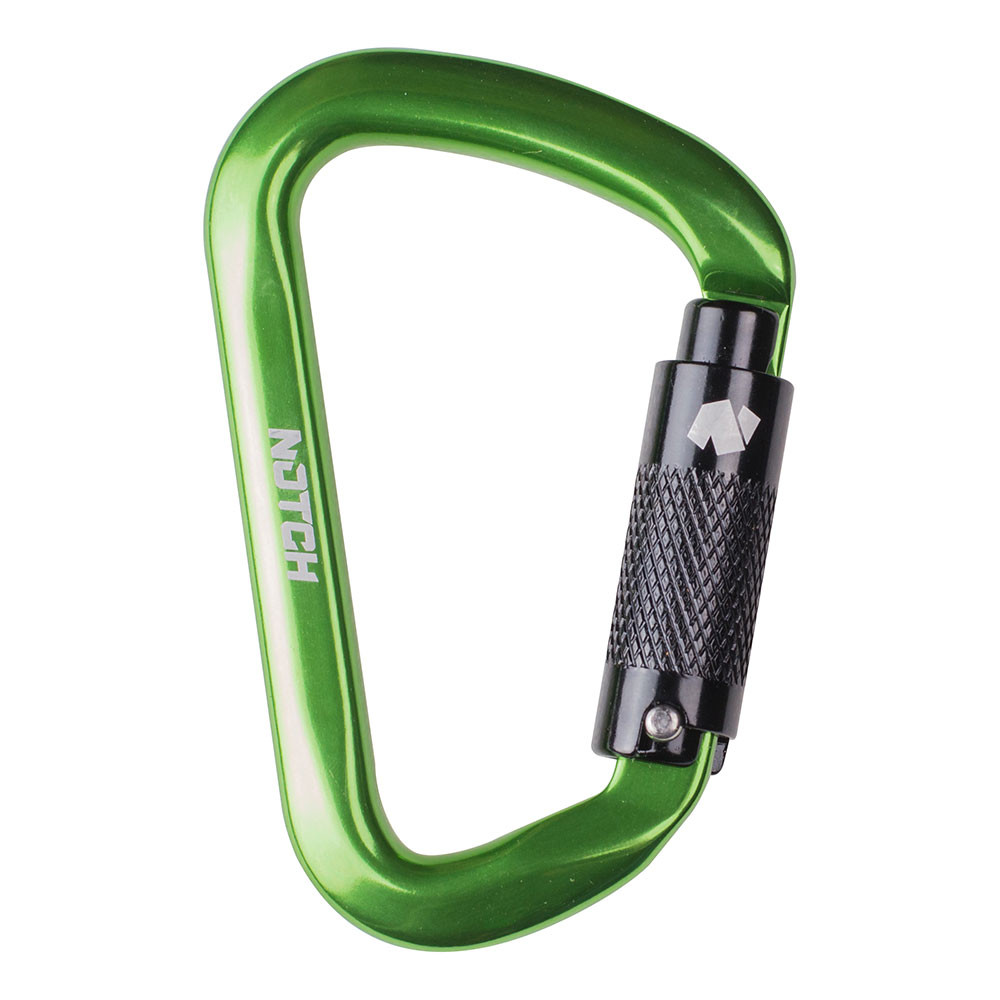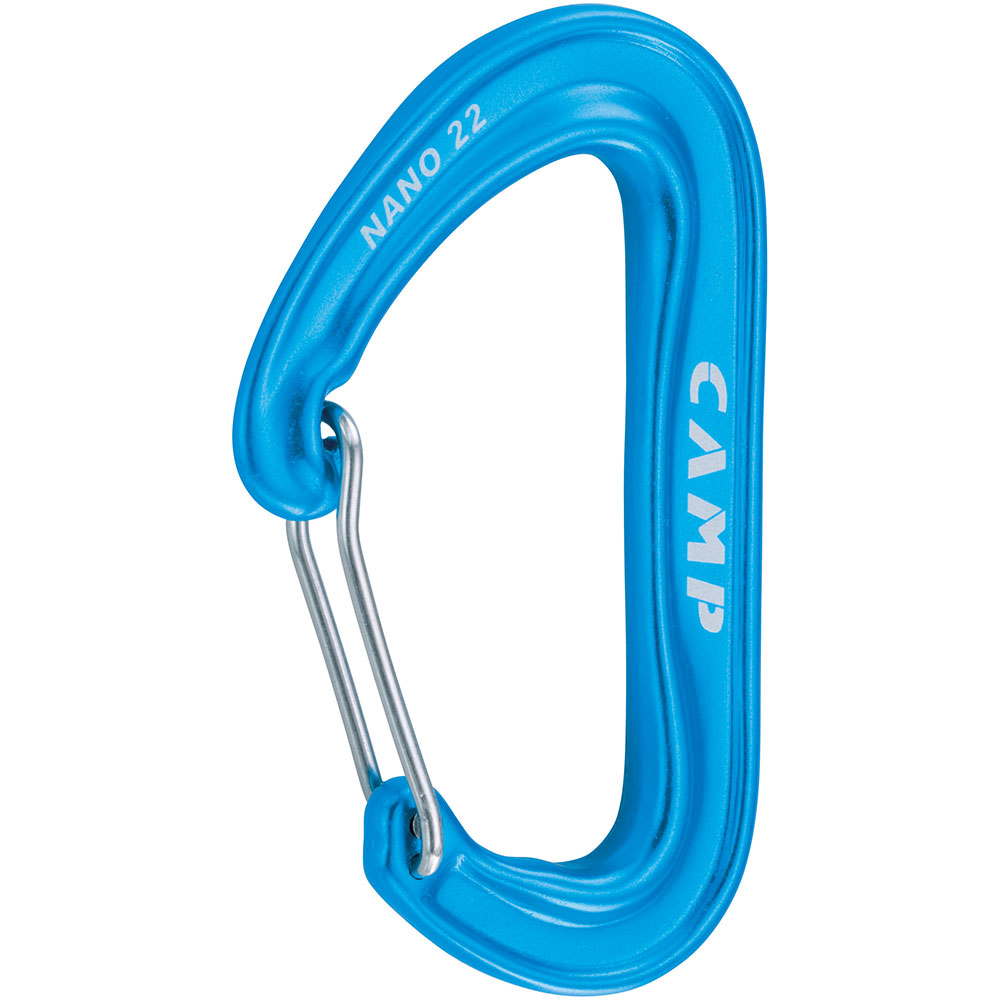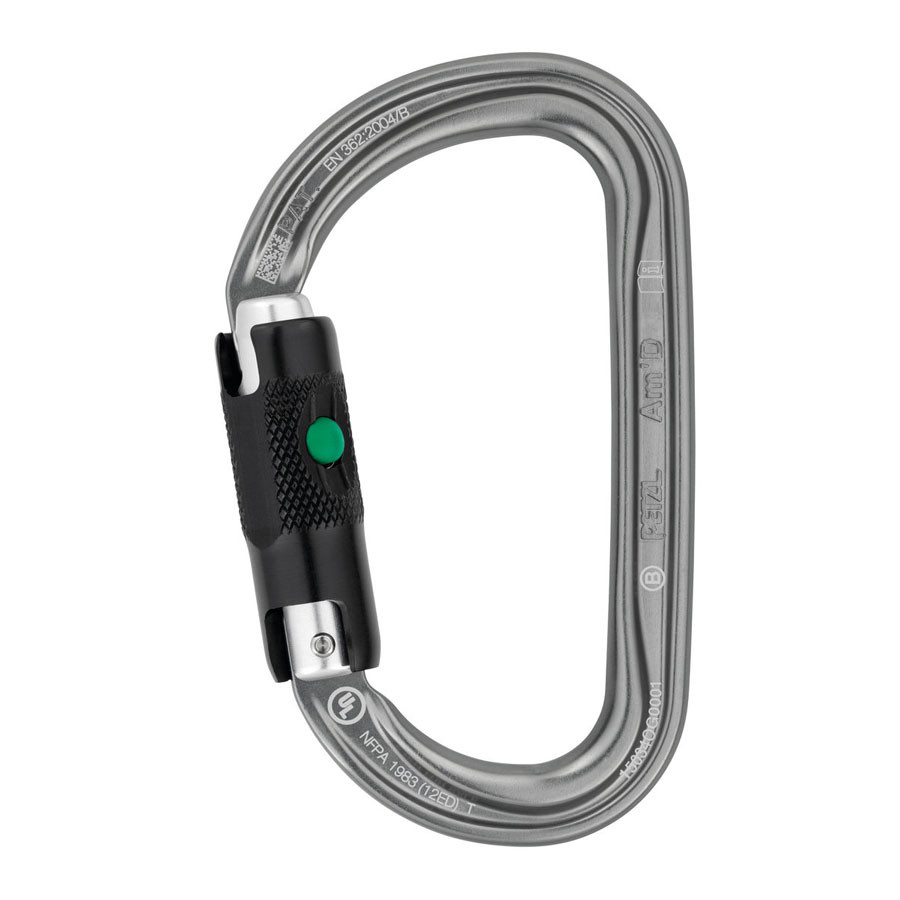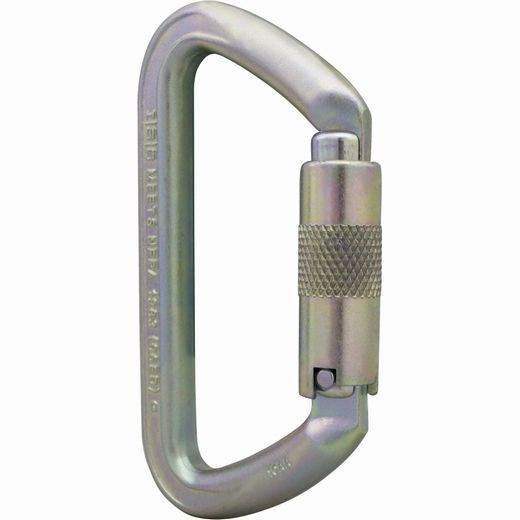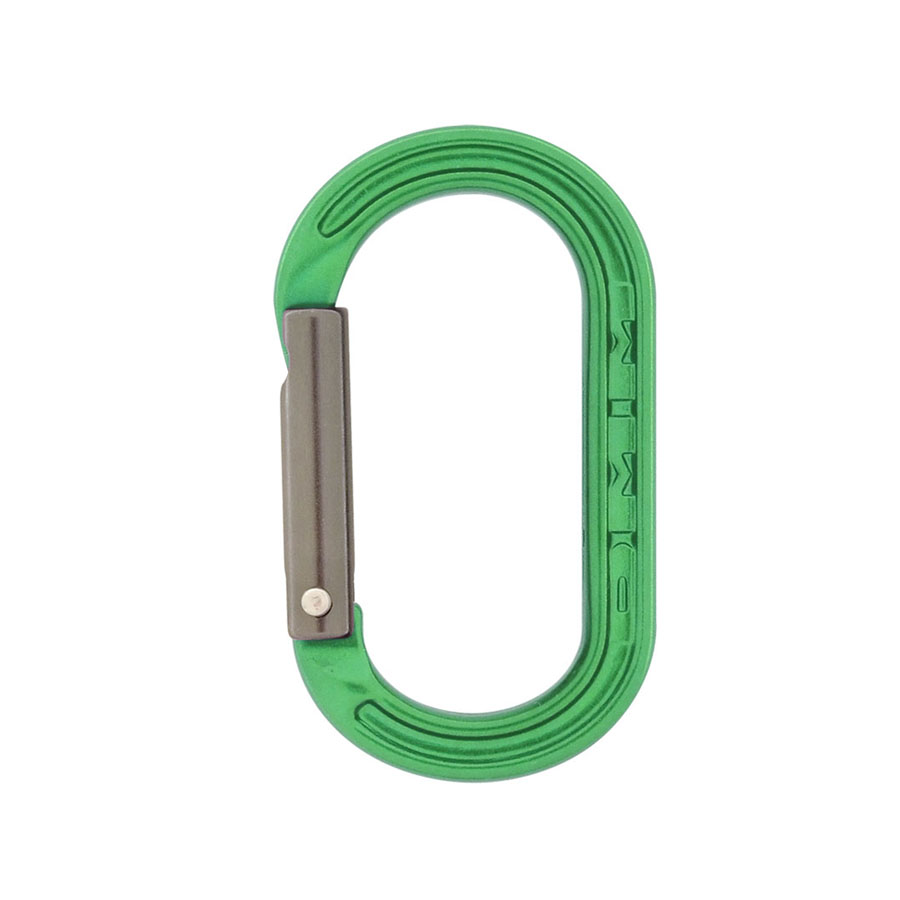Carabiners Explained
TreeStuff Jul 13th 2023There is a wide selection of carabiners available, ranging from simple accessory carabiners to the complicated triple-action auto-locking gated DMM Revolver Rig Locksafe. In this video, Nick Bonner goes in-depth with many of the carabiners found on TreeStuff.com.
Fresh Videos
Transcript
Hi, I'm Nick Bonner with treestuff.com. And today we're going to look at just some of the carabiners that are available for professional arborists and tree climbers. We could talk all day long about the hundreds of different carabiners that we assort here on TreeStuff. And that would be a long and boring video. So hopefully this will be a medium length and boring video.
Let's dive right in and start talking over here on our left, we have some accessory carabiners, these are definitely not life support, you'll hear me say life support and talk about locking mechanisms a lot. This is a stamped aluminum carabiner. That's very simple. wiregate keynose so the wire is the spring and the gate and in and of itself. The whole thing is self contained. This is an edelrid micro that comes in several sizes. There's also the Black Diamond micron, the micron has a profile that's going to be similar to some of your more standard full size carabiners. This one is rated to about 250 pounds I want to say it's labeled danger non-load-bearing. Again, standard wire gate with your hook nose. There are a lot more accessory carabiners in this kind of like in that standard family than what you see here. We also have two options from Rock Exotica and DMM. This is the rock x and the XSRE or accessory from DMM. Hot forged and milled, these are both premium versions of the same type of product you're going to see both of these feature a key lock or keynose solid gates and both of these are rated to five kilonewtons. So the rock comes in a pair and the DMM comes in a symmetrical oval over 1000 pounds for these bad boys. These are certainly luxury versions of the accessory carabiner uses are going to range from holding your keys stowing tools, setting up and configuring in ascent system little micro connections all sorts of stuff but not bodyweight please.
As we transition into what we what I would consider a full size or full strength carabiner we're going to start to see that 23 kilonewton or 5000 pound as your minimum strength. So this is a wiregate carabiner from Petzl, it's the ange-l or angle. They also have the ange-s I don't know if that has like a fun way to say it angg's. small and large. What makes this special is the type of wiregate It's a single solid piece with an additional spring. And you see this ball is what catches there, regardless of whether it's a wire gate carabiner or solid gate or any type of gate, the gate is catching in some way in the nose. And when you pull a carabiner it stretches it's hard to I can't pull it hard enough, but when it's under load, it stretches and the nose catches against whatever that gate is, and that's why the carabiner doesn't just peel open. We'll talk a little more about how the gates effect strength as we get into some of these Other shapes. So wire gates are available in the traditional type of wire, or like I showed you in this ange solid bar in a variety of sizes and shapes from all the different manufacturers.
The first locking mechanism that we really saw in the carabiner market was the twist lock, or screw lock, excuse me. So you see this carabiners open. But when I screw this shut, it's no longer open. It's locked. So screw lock. This is the most basic form of locking mechanism. It is positive, it's safe, and it will hold and stay shut. A big thing that you're going to see is that this is not generally considered life support in industrial use. Much like the twist lock that we'll go over in just a second. So screw locks are available in all sorts of different shapes and sizes from aluminum to steel carabiners from all the different manufacturers. One thing that is interesting about this carabiner that's different a feature you won't See from other manufacturers is the steel insert. This is a Edelrid's bullet-proof technology. So in an aluminum carabiner, you have a steel rope running surface, you get the weight benefits of aluminum, and the abrasion resistance, or running rope resistance of steel. So that's certainly nice and that comes a locking twistlock all sorts of different shapes and styles.
The next locking mechanism that we have this is the first auto locking carabiner The first type of locking mechanism. So this is a twist lock, it's a double action, single locking carabiner. So twist and pull will open it, it's easy to do one handed twist and pull, it will not open unless you perform the twist and pull. So one lock, second action. So two actions one to twist lock carabiners again are not considered life support in your common industrial applications. So let's talk about that. There are everything in this middle section here is a triple action double locking carabiner. And these are all considered life support by any accrediting body or country that I know of. So whether you live in Canada, Australia, America, Germany, all these carabiners are good to go as life support. So your most basic shape is going to be your oval or your offset oval as we see here. This is a notch, triple action double locking carabiner. So one action is push the barrel up, one action is twists the barrel, and a third action is open it so two locks one lock, second lock, and then the third action opens it without restriction, double x double locking triple action carabiner. Again, very easy to open. All of the carabiners that we have here are going to open in that way with a few exceptions, but it's always going to be up twist open across all of the manufacturers with the exception of Rock Exotica carabiners with all but one carabiner that they make that's auto locking, pulls down twists and opens. Some users say that this is a little easier, a little more intuitive. If you're used to the other way, you might find it a little frustrating or different. But I've known people to switch their entire set of carabiners to rock exotica once they discover this because for some people, it's just easier.
The other exception to that push up, twist and pull for the triple action double locking carabiner style is going to be your petzl ball lock. This is patented Petzl technology, so you're not going to see it in other places. But what you're going to do is push on the ball twist and open so it won't twist until you push on the ball twist and then open is going to give you one action to action three action two locks three actions. All these carabiners look like different shapes. So again, we talked about your offset oval versus your ubiquitous oval. This is the DMM ultra-o, probably one of the finest carabiners available for sale and certainly, probably our best seller. It's got really nice stippling on the gate here, very smooth action, and it's going to open easier.
What are the different shapes mean? Well, a lot of things. Your oval is your most basic shape. And when it loads, it's going to load symmetrically. So theoretically, an even amount of force is applied to the gate as to the spine, because the spine is a solid piece of aluminum and the gate isn't and the spine is stronger than the gate. So oval carabiners All Things Considered the same, or the weakest shape of carabiner because the gate is the weak point, and it sees the equal amount of load in this configuration. So oval carabiners have a lot of advantages. Which is why you start start to see these offset ovals. This is not quite a D and it's not quite an oval but because the carabiner is offset and shape to the spine side, more of the weight hits the spine then hits the gate. Therefore, the gate becomes a failure point at a higher total force. And this shape is stronger than your totally symmetrical oval. All the manufacturers make oval and are symmetrical ovals. So it's not that not just stronger than DMM. It's just a difference between these two shapes. But to continue that comparison, if you look at your standard D shaped or sorry D shaped carabiner, this is going to be your strongest shape because the load is transferred directly to the spine first and the gate at a much later stage so there's less force on the gate. D shaped is always going to be the strongest. Again, all things considered an oval steel carabiner will probably be stronger than a D shaped aluminum carabiner.
But there's also HMS or Williams style carabiners these are generally going to have. The profile here is used for self belay techniques and things like that. But you're going to see a pear shape that's designed to have more rope bearing surface up in the top and the nose section, then down here in the bottom. Some of the other features that you'll see on carabiners are captive eyes. This is a climbing technology carabiner. So again, it's going to have that triple action double locking feature, and it has a captive eye at the bottom. I personally define a captive eye as anything that is stopping rotation and localizing an attachment point to the bottom.
Now this is non permanent, this is a wireeye carabiner we call this. So you have a spring wire gate down here, which certainly can be forced out of orientation. But you know, depending on the application, this could be perfect for you. So this is useful when you're applying it to a webbing bridge and you always want it to orient up on a friction saver or a lot of other types of custom application. You'll also see more permanent fixed eyes, right? This is a great example of my ISC on a big Dan steel carabiner. So, the three steel carabiners that we have here are all from big damn steel is by far stronger than aluminum in the types of applications that we see for carabiners, but they are markedly heavier, this carabiner weighs as much as these two carabiners in the hand. It certainly feels like ISC does a really great job with steel, carabiners, DMM, petzel, notch climbing technology all make steel carabiners and all of the different shapes, styles, gate closures that you see here. So you're certainly not forced to choose ISC. A couple things that are interesting or neat about this line are features that you'll see this has what's called an offset gate on it. So again, not an ISC specific feature, you'll find offset gates in other areas. areas of the market. But the big difference is that when this opens, it opens to the side versus this one which opens straight back. What that does is it affects gate clearance, which is this space here. And by opening to the side, it won't interact with the back spine, which in most cases is going to give you more space to get rope in between the gate and the nose.
Big Dan to me this is like the ubiquitous steel rigging carabiner it's really heavy. I use these when I was out in the field all the time on the end of winch lines or anywhere that I expected a carabiner to need extra strength and take just a ton of abuse these things take it and keep on ticking. I've also seen climbers using these captive eye auto lockers as lanyard snaps. It positions while on a sewn or spliced die and also has that weight to get it around the tree that you see Some old time climbers really tend to prefer.
So overall, a general overview of your standard accessory aluminum and steel carabiners. These all have different things to offer. They're all available in a million configurations and colors. But I think that covered the basics pretty well. There are a ton of specialty carabiners hitting the market. Now I've got a couple out here to show you. They all kind of started with this one right here. This is the DMM revolver wiregate this comes in a locksafe triple action locking version, a solid gate, the whole nine yards but what really set this apart was this rotating pulley sheave down here. It was used in rock climbing and it allowed the leading line to have less friction coming through the first point of protection on rock long rock climbing routes. arborists being the crafty people that we are immediately started using this for light lowering and things like that. This was then followed by other devices in the marketplace. This is the pencil roll clip. They also have the Z clip where the gate opens. The other way. I don't know if it's right or wrong, but you'll you will notice that it's just weird, right the way the gate opens. On this one, it doesn't feel quite right, the way it's shaped but they have the Z clip where the gate opens the other way. Not can be useful when you're clipping it into ascenders and things like that. DMM a little late to the party but did not want to be left out.
They have come out with the revolver rig series as following up to the larger sheaves that you see on the petzel items. This one features your triple action or lock safe gate. Not offset we talked about offset, but here you have two sheaves, as well as a removable capptive eye pin. So this pin can be removed and the whole thing can be modified. This also has a load load bearing beckett on it, which is really useful if you're trying to set up mechanical advantage settings for all sorts of different kind of cool systems. So these are really nice hot forged parts by DMM. They never disappoint these carabiners as well as all of the carabiners that we sell treestuff.com come with our expert advice in these video series, and they're all available for 7% off with the discount code online. I really hope you enjoy this series and the information that we're able to share with you. Please leave us comments, like subscribe or check us out on Facebook, where we have a really extensive live webinar series bringing you guys hosts and topics from all over the industry on a pretty much monthly basis now. Thanks for watching. I'm Nick Bonner with treestuff.com

